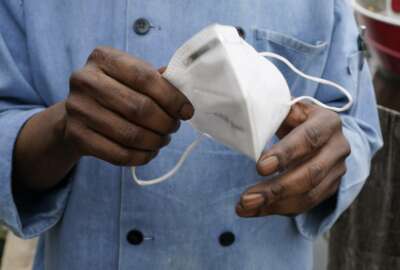The withdrawal from Afghanistan — where do you begin?
The debates have broken out, like a California wildfire, not only on how the withdrawal went, but also on the efficacy and conduct of the 20-year Afghanistan effort. The skedaddle has also swept out President Joe Biden’s honeymoon. I won’t join the debate, but it’s noteworthy, as reported in this July Reuters story, that the origin of Biden’s withdrawal decision dates back a decade.
The question has broken out all over: Was all the blood and treasure the nation sunk in Afghanistan for naught, given that the Taliban gang is back in charge?
Regardless of what the ultimate answer will be, I think it’s important to separate the policies and the outcome, however they will be judged, from the worthiness of those who participated in what they were asked to do for their country. A given insurgency operation won’t resonate through the centuries like the Battle of Agincourt. No latter-day Shakespeare will distill Afghanistan into a lyric speech.
Yet U.S. service members who participated will likely adopt “band of brothers” sentiment. Moreover, each individual left a mark that’s real, if intangible. What’s that expression — if one person can’t make a difference, neither can one million. Thanks to those, both military and civilian, who worked in that difficult country, millions of Afghans harbor in their hearts and minds knowledge of what is possible in a life free from subjugation. That’s something.
So the occasion is a good time to think about the value of one’s work as an individual. Let’s face it, most human activity is ephemeral. Programs, products, activities, campaigns begin and end, even within enduring institutions.
Say you worked in the Small Business Administration on the Payroll Protection Program. It came and went. You never actually met any of the recipients. Complaining about the bureaucratic difficulties of applying, they never met you. And yes, there was lots of fraud and money going to the unworthy. And yet somewhere out there is a restaurant, a home contractor, a bed-and-breakfast operator who’s still in business.
The other day I interviewed a Justice Department immigration judge, who is also president of the National Association of Immigration Judges. Mimi Tsankov is dealing with a lot of intramural issues on the status of the union and its bargaining agreement. She and her fellow 500 immigration judges carry on their backs a backlog of 1.4 million cases. It must look futile from the outside.
Yet Tsankov is hardly a cog in a faceless machine. She talks with the most conviction about the job itself, deciding on the fate of immigrants. On TV they look like so many undifferentiated folks, trudging in from Mexico with backpacks and Adidas t-shirts. Maybe immigration judges ask themselves, which one might be the next Roberto Guizueta, a defector to the U.S. from Cuba who became the legendary Chairman and CEO of Coca Cola?
Plus, though not a $1,000 per hour lawyer in Manhattan, where she works, Tsankov values the relationships she has with the federal bar association and the National Association of Women Judges. She teaches at Fordham. So the cases come and go, the backlog piles up, and the politicians remain unable to do anything constructive about immigration. That doesn’t detract from the value of each judge’s work.
Many feds themselves are obscure to the public but are fortunate to work on highly visible projects. My interview with Chong Le illustrates this. An engineer with decades of federal service, he’s leading a billion dollar Air Force weather satellite program. Satellites aren’t permanent. They get old, new technology comes along, and the old ones burn up. But for 20 years, they did throw off good data. The unnamed people who worked on them didn’t toil in futility.
Monday is Labor Day. Originating in the labor movement, it celebrates, in part, the dignity of any and all work. There’s lots of talk about infrastructure. I see infrastructure at the brick or rivet level. When I’m crossing a bridge or admiring an old building with intricate brickwork, I imagine the riveter who put that connector in New York’s George Washington Bridge in the late 1920s? Or who laid that brick at the top of that great townhouse near DuPont Circle?
No matter the job, honest work leaves a mark in one way or another. Including those serving in Afghanistan.
Nearly Useless Factoid
By Alazar Moges
According to birth data from 1994 to 2014 from the National Center for Health Statistics and Social Security Administration, the most popular birthday date in the United States is now September 9th, with September being the busiest birth month of all. That suggests many people are conceiving around the holidays since pregnancies last an average of about 38 weeks.
Source: The Daily Viz
Copyright
© 2024 Federal News Network. All rights reserved. This website is not intended for users located within the European Economic Area.





